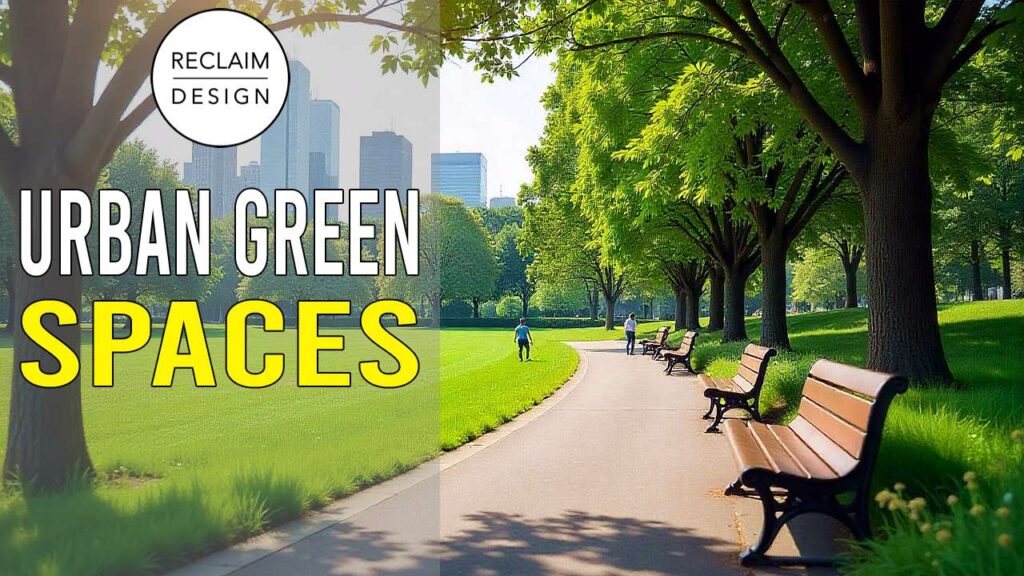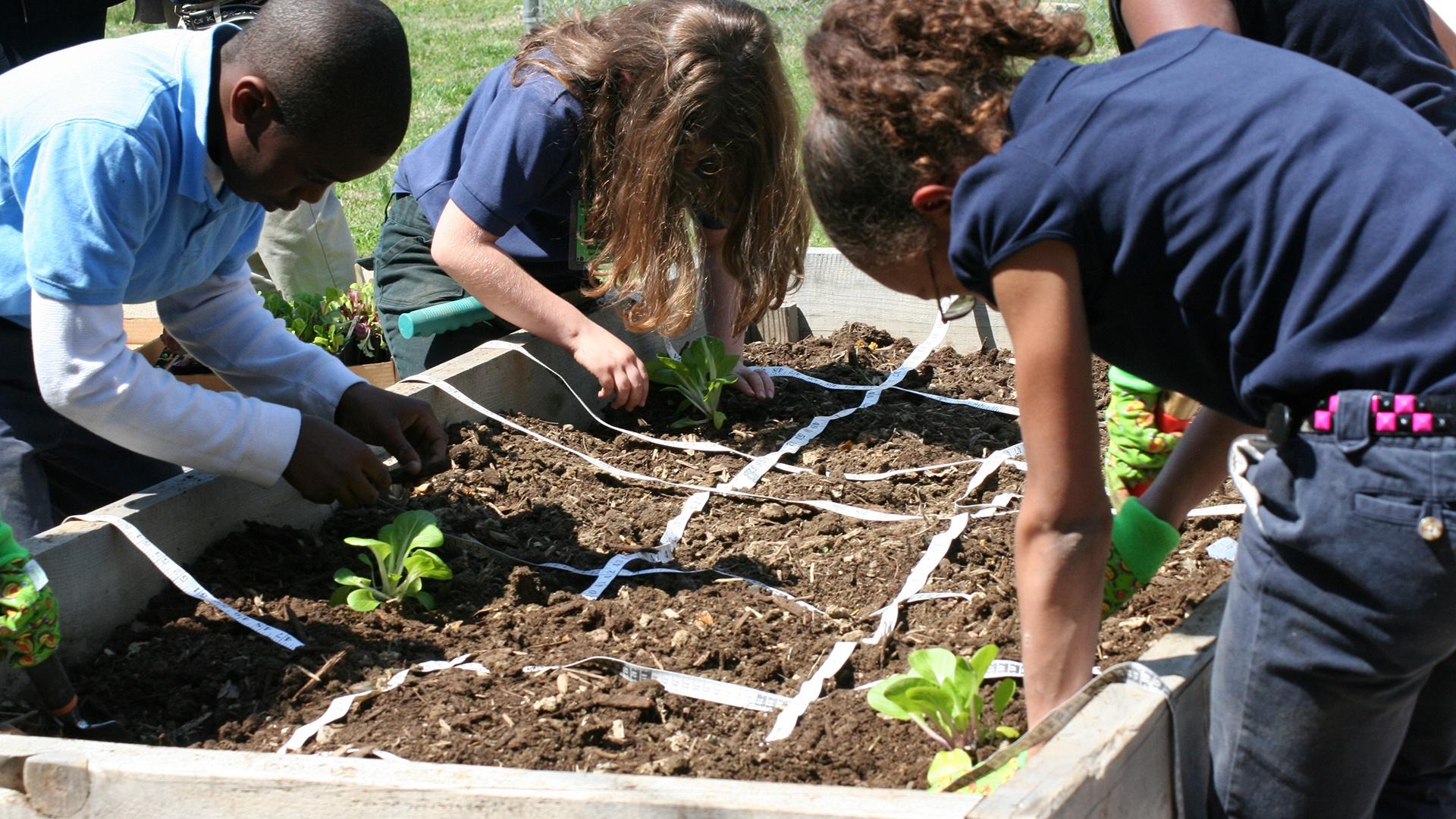
Introduction: Why Urban Green Spaces Matter More Than Ever
In the concrete jungles we’ve built, teeming with millions, a silent revolution is taking root. It’s not a political uprising, but a verdant resurgence – the rise of sustainable urban green spaces. These aren’t just parks and gardens; they’re the lungs of our cities, the oases of calm in a chaotic world, and the cornerstones of a healthier, more sustainable urban future.
We often hear about the urgent need to combat climate change, improve public health, and foster social equity. But what if I told you there was a single solution that addresses all these challenges simultaneously? Enter sustainable urban green spaces. From pocket parks to sprawling urban forests, these areas play a critical role in shaping the livability and resilience of our cities.
This article delves into the multifaceted importance of sustainable urban green spaces, exploring their environmental, social, and economic benefits. We’ll examine the challenges of creating and maintaining these spaces, and highlight innovative strategies for integrating them into the urban fabric. So, join us as we explore how green spaces are transforming our cities, one tree, one park, and one community at a time.
The Environmental Benefits: A Breath of Fresh Air
Let’s face it, cities are notorious for their environmental impact. Pollution, heat island effect, and biodiversity loss are just some of the challenges that urban areas face. But green spaces offer a powerful antidote, helping to mitigate these problems and create a healthier environment for all.
Combating the Urban Heat Island Effect
One of the most noticeable environmental benefits of green spaces is their ability to cool down urban areas. The urban heat island effect, caused by the abundance of concrete and asphalt, can raise temperatures in cities by several degrees compared to surrounding rural areas. This not only increases energy consumption for cooling but also poses health risks, especially for vulnerable populations.
Green spaces, with their vegetation and shade, help to counteract this effect. Trees provide shade, reducing the amount of solar radiation absorbed by surfaces. Plants also release water vapor through transpiration, a process that cools the air. Studies have shown that parks and green roofs can significantly lower temperatures in their immediate vicinity, making cities more comfortable and livable.
Improving Air Quality
Urban air pollution is a major concern, contributing to respiratory illnesses and other health problems. Green spaces act as natural air filters, absorbing pollutants like nitrogen dioxide, sulfur dioxide, and particulate matter. Trees and other vegetation trap these pollutants on their leaves and branches, effectively cleaning the air.
Furthermore, green spaces can reduce the formation of ground-level ozone, a harmful pollutant that forms when nitrogen oxides and volatile organic compounds react in sunlight. By absorbing these precursor pollutants, green spaces help to improve air quality and protect public health. Imagine breathing easier simply by walking through a park – that’s the power of urban green spaces.
Enhancing Biodiversity
Cities are often seen as biodiversity deserts, but green spaces can provide vital habitats for plants, animals, and insects. Parks, gardens, and green roofs can support a wide range of species, from birds and butterflies to squirrels and bees. These green spaces act as stepping stones, connecting fragmented habitats and allowing wildlife to thrive in urban environments.
Creating diverse and well-managed green spaces is crucial for supporting biodiversity. Planting native species, providing water sources, and avoiding the use of pesticides can all help to attract and sustain wildlife. By enhancing biodiversity, green spaces not only enrich our urban ecosystems but also provide opportunities for people to connect with nature.
Managing Stormwater Runoff
Urban areas are prone to flooding due to the abundance of impervious surfaces that prevent rainwater from infiltrating into the ground. Green spaces can help to manage stormwater runoff by absorbing rainwater and reducing the amount of water that flows into storm drains. This reduces the risk of flooding and helps to protect water quality.
Rain gardens, green roofs, and permeable pavements are all examples of green infrastructure that can be used to manage stormwater runoff. These features capture rainwater and allow it to slowly infiltrate into the ground, replenishing groundwater supplies and reducing pollution. By managing stormwater runoff, green spaces help to create more resilient and sustainable cities.
The Social Benefits: Building Stronger Communities
Beyond their environmental benefits, urban green spaces play a vital role in fostering social well-being and building stronger communities. They provide spaces for recreation, relaxation, and social interaction, contributing to improved mental and physical health.
Promoting Physical Activity
In today’s sedentary society, promoting physical activity is more important than ever. Green spaces provide opportunities for people to engage in a wide range of physical activities, from walking and jogging to cycling and team sports. Parks and trails encourage people to get active and enjoy the outdoors, improving their physical health and reducing the risk of chronic diseases.
Access to green spaces is particularly important for children, who need opportunities for outdoor play to develop their physical and cognitive skills. Parks and playgrounds provide safe and stimulating environments for children to explore, learn, and socialize. By promoting physical activity, green spaces help to create healthier and more active communities.
Improving Mental Health and Well-being
Spending time in nature has been shown to have numerous benefits for mental health and well-being. Green spaces provide a sense of calm and relaxation, reducing stress and anxiety. Studies have shown that people who live near green spaces are less likely to suffer from depression and other mental health problems.
Green spaces also provide opportunities for social interaction and community building. Parks and gardens are places where people can meet, socialize, and build relationships. These social connections are essential for mental well-being and can help to combat social isolation. Imagine the joy of sharing a picnic with friends in a park or volunteering in a community garden – these are the experiences that make our cities more livable and enjoyable.
Fostering Social Equity
Access to green spaces is not always equal. In many cities, low-income neighborhoods have less access to parks and green spaces than wealthier neighborhoods. This disparity can exacerbate existing social inequalities, as low-income residents miss out on the health and social benefits of green spaces.
Creating equitable access to green spaces is crucial for promoting social justice. This means ensuring that all residents, regardless of their income or background, have access to high-quality parks and green spaces within walking distance of their homes. Investing in green spaces in underserved communities can help to improve health outcomes, reduce crime, and foster a sense of community.
Enhancing Community Engagement
Green spaces can also serve as focal points for community engagement. Community gardens, for example, provide opportunities for residents to grow their own food, learn about sustainable gardening practices, and connect with their neighbors. These gardens can transform vacant lots into vibrant community spaces, fostering a sense of ownership and pride.
Parks and community centers can also host events and activities that bring people together. Concerts, festivals, and educational programs can attract residents from all walks of life, creating a sense of community and belonging. By enhancing community engagement, green spaces help to create more vibrant and resilient neighborhoods.
The Economic Benefits: Investing in a Greener Future
While the environmental and social benefits of urban green spaces are undeniable, their economic benefits are often overlooked. Green spaces can increase property values, attract businesses, and boost tourism, contributing to a stronger and more prosperous economy.
Increasing Property Values
Proximity to green spaces is a major selling point for real estate. Studies have shown that properties located near parks and green spaces command higher prices than comparable properties located further away. This is because people are willing to pay a premium for the aesthetic appeal, recreational opportunities, and health benefits that green spaces provide.
Investing in green spaces can therefore be a smart economic strategy for cities. By creating more parks and green spaces, cities can increase property values, generate more tax revenue, and attract new residents and businesses. It’s a win-win situation for everyone.
Attracting Businesses and Investment
Companies are increasingly recognizing the importance of green spaces for attracting and retaining employees. Employees want to work in cities that are livable, sustainable, and offer opportunities for recreation and relaxation. Green spaces can help to create these desirable environments, making cities more attractive to businesses and investment.
Furthermore, green spaces can support local businesses by attracting customers and creating a vibrant atmosphere. Parks and plazas can host farmers markets, outdoor cafes, and other events that draw people to the area. By supporting local businesses, green spaces contribute to a stronger and more diverse economy.
Boosting Tourism and Recreation
Green spaces are major attractions for tourists and visitors. Parks, gardens, and nature reserves draw millions of tourists each year, generating revenue for local businesses and supporting the tourism industry. These green spaces provide opportunities for hiking, biking, birdwatching, and other outdoor activities, attracting visitors from all over the world.
Investing in green spaces can therefore be a smart strategy for boosting tourism and recreation. By creating more parks, trails, and green attractions, cities can attract more visitors, generate more revenue, and create more jobs. It’s a great way to showcase the city’s natural beauty and enhance its appeal to tourists.
Reducing Healthcare Costs
As mentioned earlier, green spaces have numerous benefits for physical and mental health. By promoting physical activity, reducing stress, and improving air quality, green spaces can help to prevent chronic diseases and reduce healthcare costs. Studies have shown that people who live near green spaces are less likely to be hospitalized for respiratory and cardiovascular problems.
Investing in green spaces can therefore be a cost-effective way to improve public health and reduce healthcare costs. By creating more parks and green spaces, cities can promote healthier lifestyles, prevent chronic diseases, and save money on healthcare. It’s a smart investment in the future of our communities.
Challenges and Solutions: Greening the Urban Landscape
Creating and maintaining sustainable urban green spaces is not without its challenges. Land scarcity, funding constraints, and community resistance are just some of the obstacles that cities face. However, with innovative strategies and collaborative partnerships, these challenges can be overcome.
Land Scarcity
In densely populated urban areas, land is a precious commodity. Finding space for parks and green spaces can be a major challenge, especially in areas where land values are high. However, there are several strategies that cities can use to overcome this challenge.
One strategy is to repurpose underutilized spaces, such as vacant lots, abandoned industrial sites, and rooftops. These spaces can be transformed into pocket parks, community gardens, and green roofs, providing valuable green space in areas where it is most needed. Another strategy is to create multi-use spaces that combine green space with other functions, such as stormwater management or transportation infrastructure. For example, a park can be designed to also serve as a detention basin for stormwater runoff, or a greenway can be integrated into a transportation corridor.
Funding Constraints
Funding is another major challenge for creating and maintaining urban green spaces. Parks and green spaces often compete with other priorities for limited public funds. However, there are several ways to overcome this challenge.
One strategy is to leverage private funding through partnerships with businesses, foundations, and community organizations. These partnerships can provide financial support for park development, maintenance, and programming. Another strategy is to generate revenue from green spaces through user fees, concessions, and special events. For example, a park can charge fees for renting picnic shelters or hosting events, or it can generate revenue from selling food and beverages. Cities can also explore innovative funding mechanisms, such as green bonds and tax increment financing, to support green space projects.
Community Resistance
Sometimes, communities may resist the creation of new green spaces, especially if it involves the displacement of existing residents or businesses. It is important to engage with the community early in the planning process and address their concerns. This can involve holding public meetings, conducting surveys, and working with community leaders to develop a plan that meets the needs of everyone.
It is also important to demonstrate the benefits of green spaces to the community. This can involve showcasing successful green space projects in other cities, highlighting the health and economic benefits of green spaces, and involving the community in the design and maintenance of green spaces. By engaging with the community and addressing their concerns, cities can overcome resistance and create green spaces that are valued and supported by everyone.
Maintenance and Management
Creating a green space is only half the battle; maintaining it is just as important. Neglected and poorly maintained green spaces can become eyesores and attract crime. Cities need to invest in ongoing maintenance and management to ensure that green spaces remain safe, clean, and attractive.
This can involve hiring park staff, contracting with landscaping companies, and engaging volunteers. It is also important to develop a maintenance plan that addresses issues such as mowing, pruning, irrigation, and pest control. By investing in maintenance and management, cities can ensure that green spaces continue to provide benefits for years to come.
Innovative Strategies: Greening the Future of Our Cities
As cities continue to grow and evolve, innovative strategies are needed to create and maintain sustainable urban green spaces. From green roofs and walls to vertical farms and urban forests, these innovative approaches are transforming the way we think about green space in cities.
Green Roofs and Walls
Green roofs and walls are a great way to add green space to buildings. Green roofs are roofs that are covered with vegetation, while green walls are walls that are covered with vegetation. These features can provide a number of benefits, including reducing stormwater runoff, improving air quality, and reducing the urban heat island effect.
Green roofs and walls can also enhance the aesthetic appeal of buildings and create a more pleasant environment for residents and workers. They are particularly well-suited for densely populated urban areas where land is scarce. Cities around the world are increasingly adopting policies to encourage the construction of green roofs and walls on new and existing buildings.
Vertical Farms
Vertical farms are indoor farms that grow crops in vertically stacked layers. These farms can be located in warehouses, shipping containers, or even skyscrapers. Vertical farms offer a number of advantages over traditional agriculture, including higher yields, reduced water consumption, and less reliance on pesticides.
Vertical farms can also be located in urban areas, bringing fresh produce closer to consumers and reducing transportation costs. They can also create jobs and provide educational opportunities for local residents. While vertical farms are still a relatively new technology, they have the potential to revolutionize the way we grow food in cities.
Urban Forests
Urban forests are networks of trees and other vegetation that are located within cities. These forests can include parks, street trees, and private gardens. Urban forests provide a number of benefits, including improving air quality, reducing the urban heat island effect, and enhancing biodiversity.
Urban forests can also provide recreational opportunities for residents and create a more pleasant environment for living and working. Cities need to invest in planting and maintaining urban forests to ensure that they continue to provide these benefits for years to come. This can involve developing urban forestry plans, planting trees in public spaces, and educating residents about the importance of trees.
Community Engagement and Stewardship
Ultimately, the success of urban green spaces depends on community engagement and stewardship. Residents need to be involved in the planning, design, and maintenance of green spaces to ensure that they meet their needs and reflect their values. This can involve holding public meetings, conducting surveys, and creating volunteer opportunities.
It is also important to educate residents about the benefits of green spaces and encourage them to take ownership of these spaces. This can involve organizing community events, creating educational programs, and providing resources for residents to care for green spaces in their neighborhoods. By engaging the community and fostering a sense of stewardship, cities can ensure that green spaces are valued and supported by everyone.
Conclusion: A Greener Future is Within Reach
Sustainable urban green spaces are not just a luxury; they are a necessity for creating healthy, livable, and resilient cities. From combating climate change and improving public health to fostering social equity and boosting the economy, green spaces offer a wide range of benefits that are essential for a sustainable future.
While creating and maintaining these spaces can be challenging, innovative strategies and collaborative partnerships can help to overcome these obstacles. By investing in green spaces and engaging the community, cities can transform themselves into oases of calm, beauty, and sustainability. The future of our cities depends on it.
Let’s work together to create a greener future, one park, one garden, and one tree at a time. The air we breathe, the water we drink, and the communities we build depend on it.


